The Last BLM Tour of the Wild Horses in Long Term Holding Facilities
August 14, 2017Wild Horses and Burros Need Your Help Now – Please Call Congress Today!
September 5, 2017In July 2017 I traveled to Sable Island on a ship with Adventure Canada. Visiting and photographing the wild horses of Sable Island had been a dream of mine for over 9 years, and finally I was able to go. The island is only 25 miles long, a sand island, 100 miles off the coast of Nova Scotia. Since December 2013, the island is managed by Parks Canada, and any voyage there has to be approved and monitored by them.
The morning we arrived on the island, the weather was fair and clear, perfect for a landing. I could not wait to get ashore. I was with one of the groups who wanted to visit the horses, of course. We first spotted a family of wild horses in the dunes, and watching the foals who were very curious about us, was very entertaining. Just like in wild horse families I have observed in the American west, the stallion kept an eye on us and his family the whole time we were there.
After observing this family we walked through the sand and the dunes to get to the fresh water ponds. We were incredibly lucky since the gorgeous Iris were in bloom, and a stallion was in the middle of the pond grazing on water grasses.
I noticed that many of the mares that were nursing still had their heavy winter coats, as did the yearlings, last year’s foals. So much of the mare’s nutrients go to feeding her foal and so she may be quite late in shedding out.
We were able to watch one stallion run up to another and posture and prance, but there was no fighting. It seemed clear that these two knew each other.
All too soon we had to head back to the ship, but I was happy to hear we were coming back to the same area the next day.
We did go out in the Zodaics in the afternoon for a cruise off the shore, but it was hard to get close enough for photographs, because the horses would see us and run away, except when we came to these two bachelor stallions
It was foggy the next day, which gave the island an air of mystery.
We went back to the pond and enjoyed watching the horses at the pond, then doing mutual grooming on each other.
The sky cleared for a little while.
The most excitement we had that day was when a stallion over the hill ran down to the stallion at the pond, and they faced off, sniffing each other, circling, posturing and prancing. The stallions look gorgeous when they are showing off to intimidate each other. The stallion with the smaller family, who looked younger, finally ran back to his family.
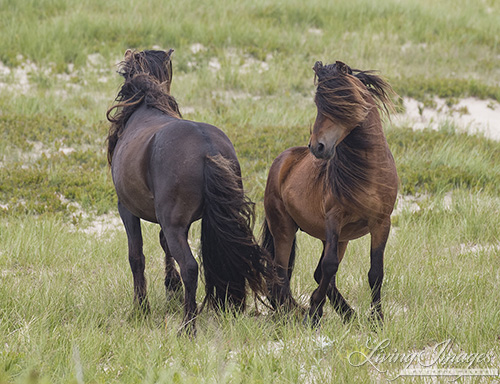
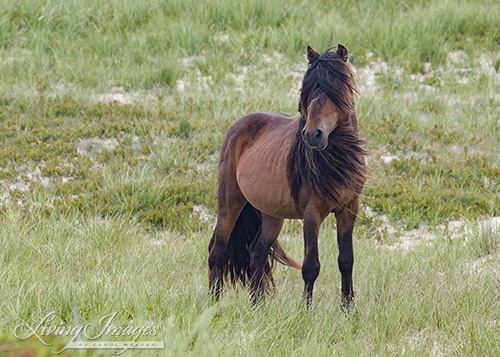
The younger stallion
We went back to the ship. The next day the fog was thicker and we could not even see the beach from the ship. We ended up seeing only 1 horse that day, a bachelor stallion who seemed unfazed by all his fans.
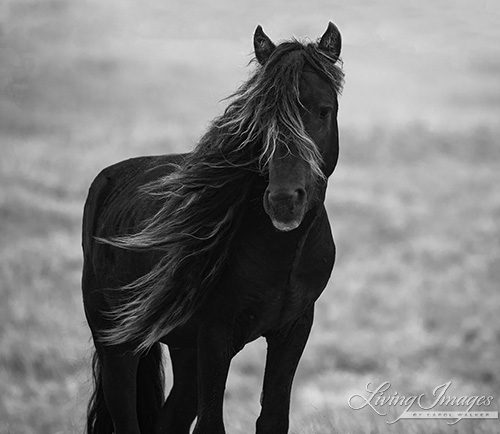
Sable Island Bachelor Stallion
On our last day on Sable Island, we visited an area dubbed “Horse Heaven” for good reason. I counted over 70 wild horses in the grassy dunes in this area. Parks Canada did not let us get off the sand and get near the horses because of nesting gulls.
Two stallions have a short disagreement.
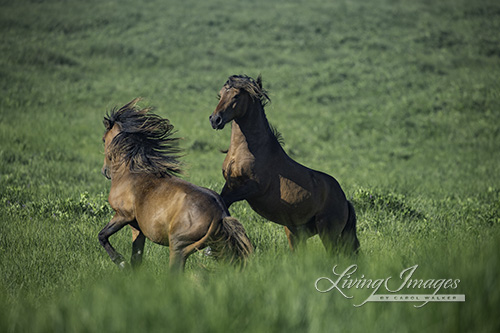
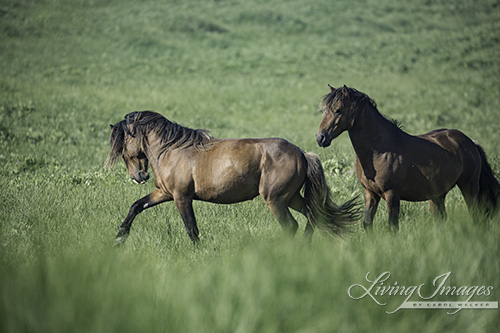
This small family was taking a mid morning nap.
And this yearling we nicknamed “Woolie,” for obvious reasons.
My time on the island was far too short, but I feel very lucky to have been able to see and photograph and come close to these very special horses in their unique home. There are over 500 wild horses on Sable Island, and the population has been on the rise in recent years due to the increase in the grey seal population – the decaying bodies of seals provide nutrients for the grass to grow.
But unlike the wild horses in America, these wild horses are protected, and have been since 1960. They are not rounded up, they are not given birth control. The mortality rate for foals is 30-40%, high because of the very harsh winters. This is the very best place for them. There are studies done on the horses, with each being given a name and number. They will be born, live out their lives, and die and then their bodies will nourish the island for future generations. They give me hope, because that is what I want for our wild horses in the American west.
The images of Sable Island wild horses in this post plus many more can been purchased here: http://www.livingimagescjw.com/buy-books-prints/fine-art-prints/nggallery/wild-horses/Sable-Island
Friends of Sable Island Society, dedicated to the preservation of Sable Island: http://sableislandfriends.ca/

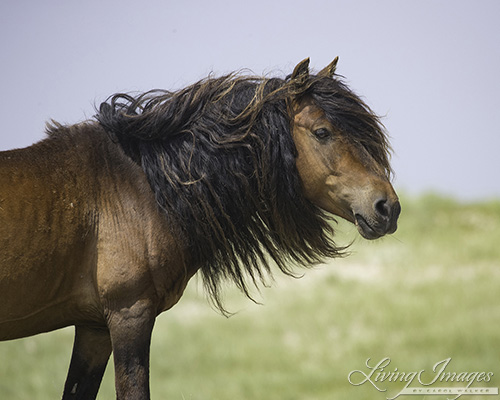
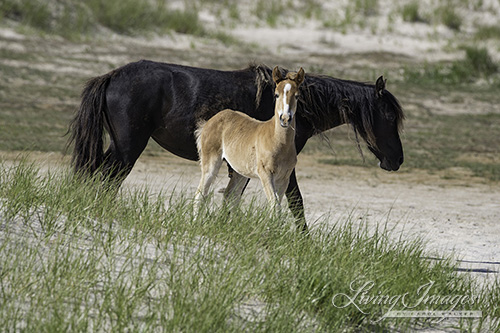
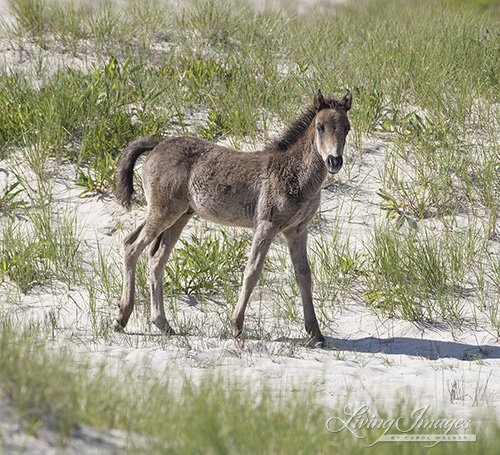
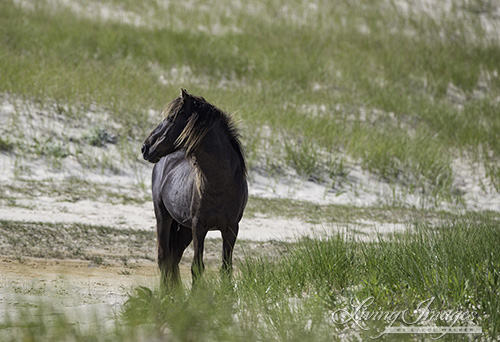
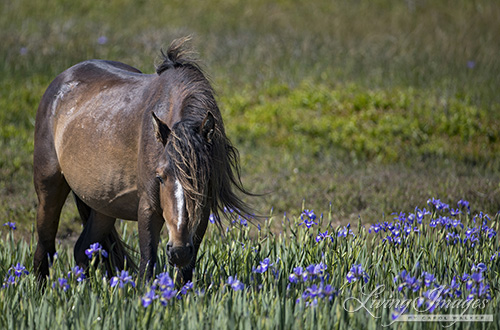
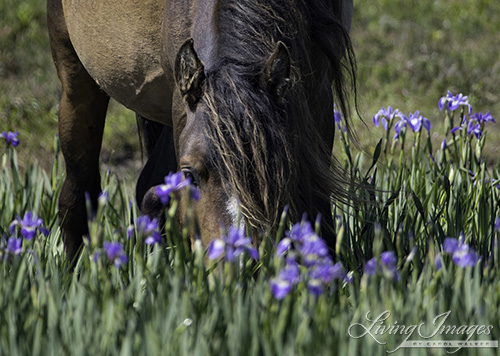
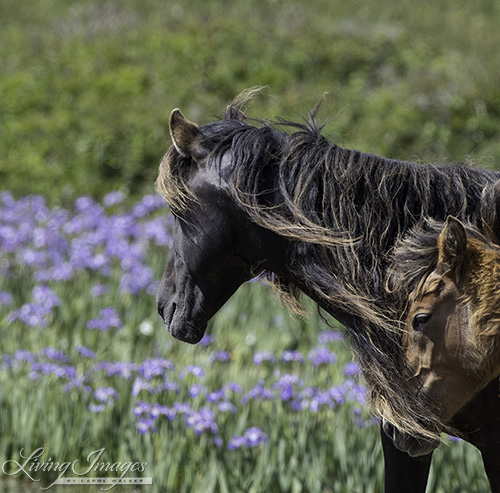
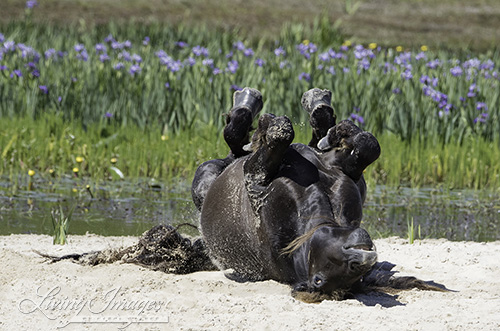
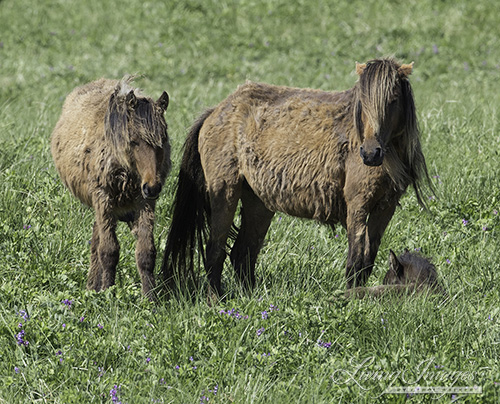
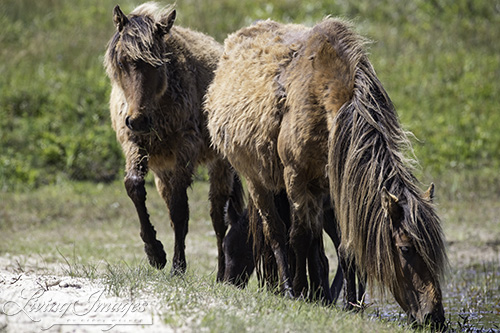
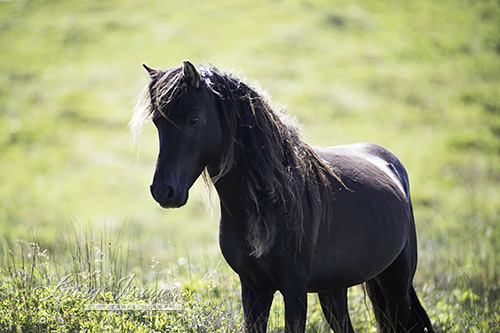
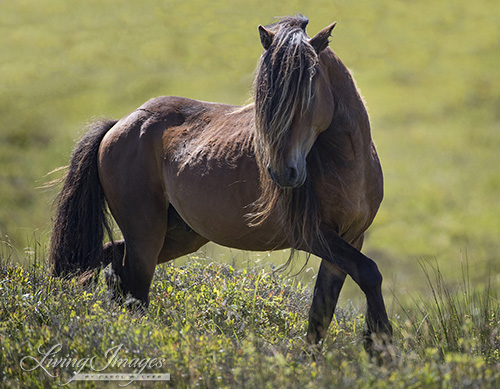
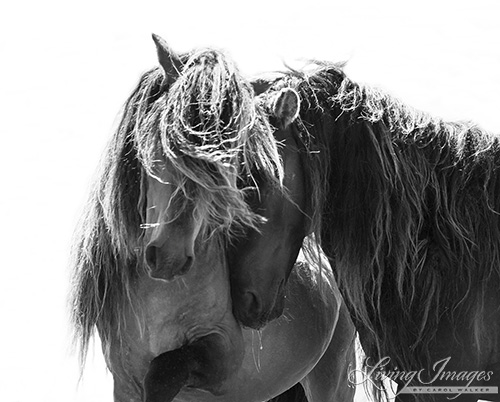
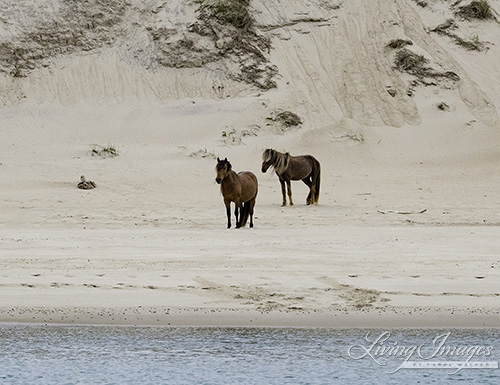
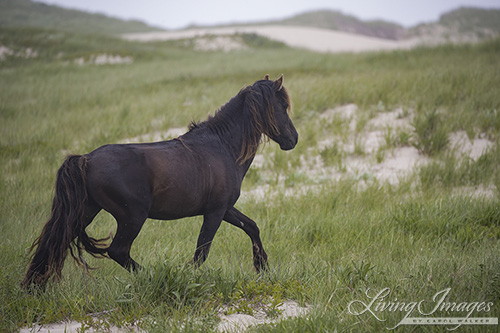
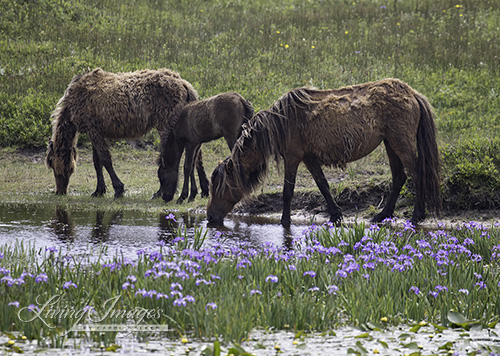
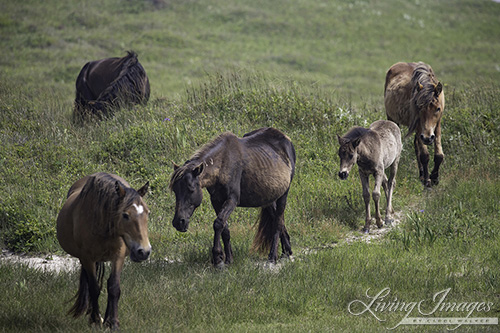
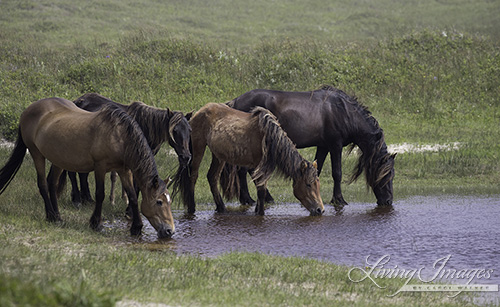
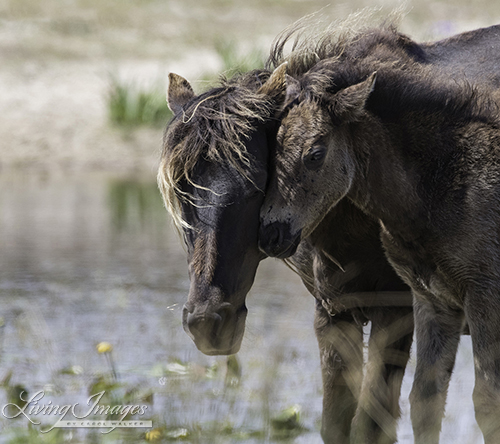
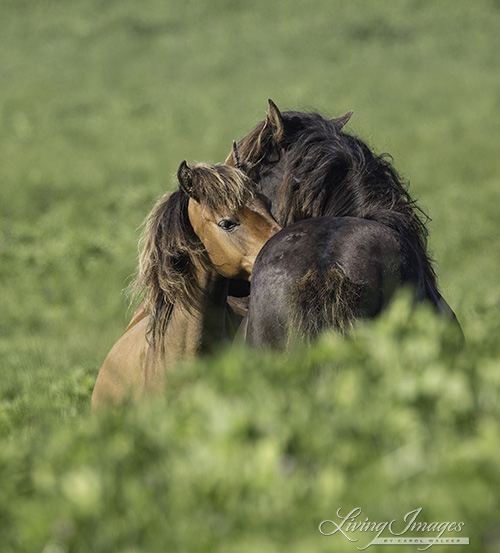
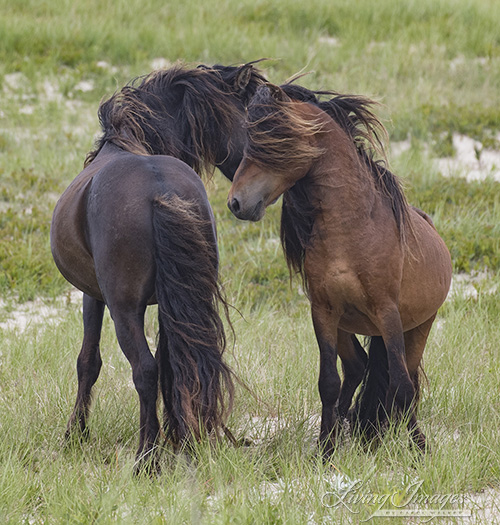
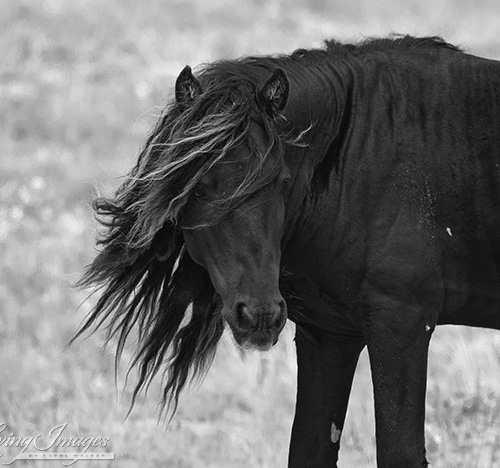
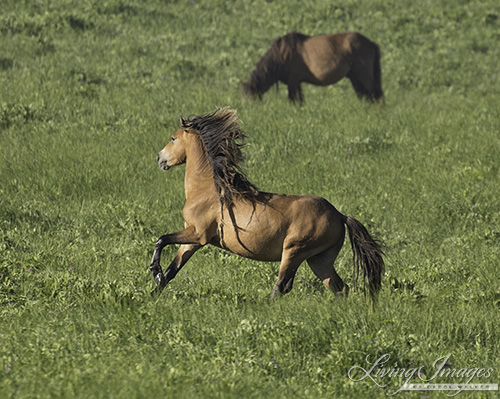
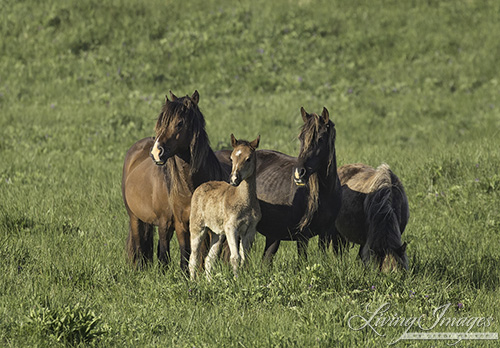
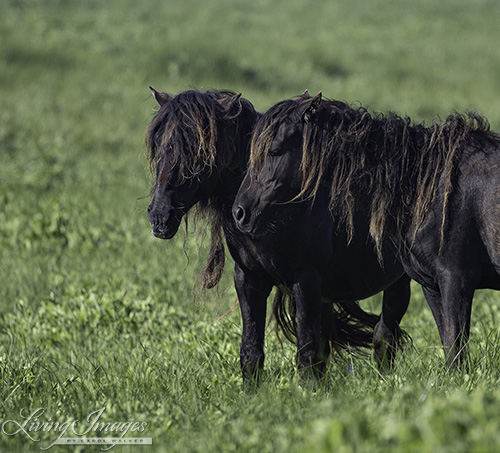
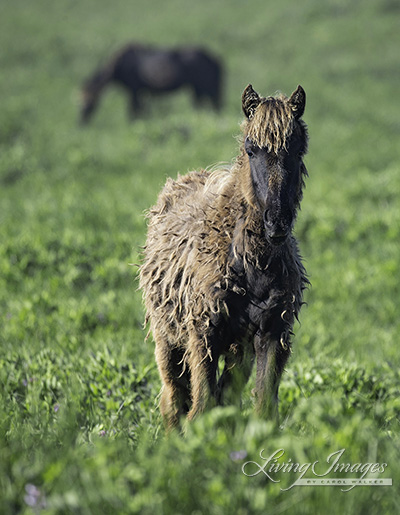
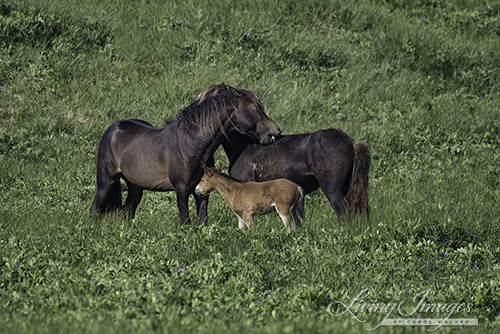
9 Comments
Cant get over the manes on the stallions! So you believe the mares with the woolly coats might be from all the nutrients going to the foals – but those foals seem to be the ones with the winter coats too. Really odd that some have not shed out and other mares & foals and the stallions seem to have their summer coats.
That has to be such a horrendous winter environment for them. I certainly can believe the little ones have a hard time surviving – the amazing thing is that so many DO survive!
Thanks Carol – great pictures
Actually the long manes are not on just the stallions! Just beautiful – Sure is good to see wild horses that are allowed to live their lives for better or worse without human interference!
Exactly Maggie! At least no interference since 1961. And Parks Canada is very protective of the wild horses since they took over their management at the end of 2013.
It is a very tough environment in winter. And it was the yearlings not the this year’s foals who had the wooly coats and I have seen that in the American west and also this summer in Germany with the Duelmen wild horses – the yearlings were wooly and had not shed out.
Wild horses love cold weather, but not web, cold weather. The way they survived the extreme cold and wet of the Pleistocene was in environments just like this. With so much sea water tied up in glaciers, the low lying coastal areas expanded into warmer and drier coastal grasslands. These pictures made me think of what I’ve read about the horses in the West and Northwest living along the Pacific coast on Beringia, an area compared to the state of Texas in its size. This whole area area served as habitat for Pleistocene mammals such as mammoths, mastodons, reindeer, moose, as well as habitat for humans crossing from Siberia or other areas in Asia.
Nature equipped horses with an extra layer of fat under their skill and their hair extends to keep out the wind. Foals born into these climates will have heavier coats and colors will generally be those that blend into the landscape of the area.These coats look like sheep’s wool and are probably even warmer than heavy horse coats that we usually see.
[…] SOURCE: Wildhoofbeats.com […]
Carol, you are always so quick to reply to comments – I have a question – dont know who else to ask. I commented on an article re: wild horses & of course got pounded on by other anti-wild horse people. Got this comment back from one of them – now I dont know if its the truth or not. I am not as knowledgeable about the allotment program – which I admit. As you can see – it had devolved!!! I didnt ask a question.
BUT is this true? Do the allotment users shell out as he says?
“As for your grazing allotment question… SO glad you asked. Let me explain the difference between a public lands allotment and grazing another persons private property. When I lease my private property for grazing I do all the fencing, water maintenance, herd rotation, reseeding, road maintenance, salt blocking and medical care. Therefore, there is a cost associated with this and I charge for it. (think first class flight) Now, If I run my cows on a federal a llotment I have to do all the above maintenance and work on the publics lands therefore the price is about 90% less because all that work is being done by the person grazing the land. On top of this issue is the fact that most private grazed land will provide a better yield of forage. (the cattle gain more weight) therefore it is more valuable. (think a better stock yield so a higher stock price) You obviously do not know what you think you know about natural resources, I hope you will accept your new knowledge.”
Ranchers pay $1.35 per cow/calf pair per month – and we call them welfare ranchers because this is a fraction of what they would pay for private land, a fraction of what the program actually costs to run. This program loses millions of dollars per year. They might have to do improvements on the land they lease but it does not make up for the huge discrepancy in price.
I thought I had read it was up (!) to $1.87 this year – wrong?
So this guy (or gal) is wrong! It made me wonder if I had been wrong in what I believed. I’m well aware that the program does NOT support itself. No one ever went thru & “explained” it the way this guy did. I live in NY – no experience with the whole livestock industry –
Thanks for your answer – I appreciate it.